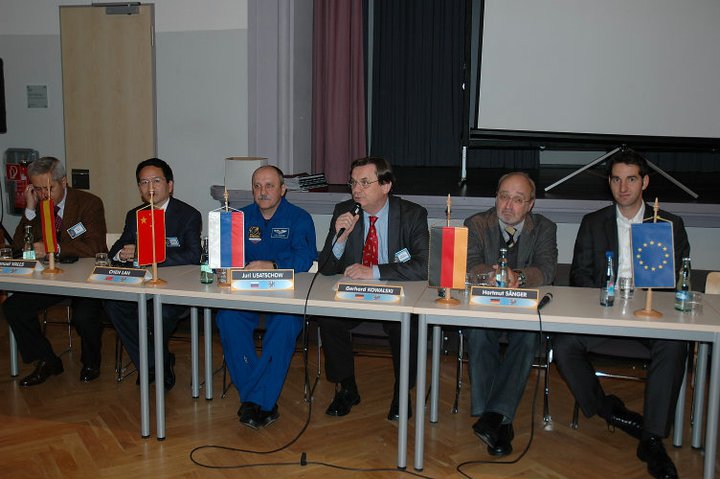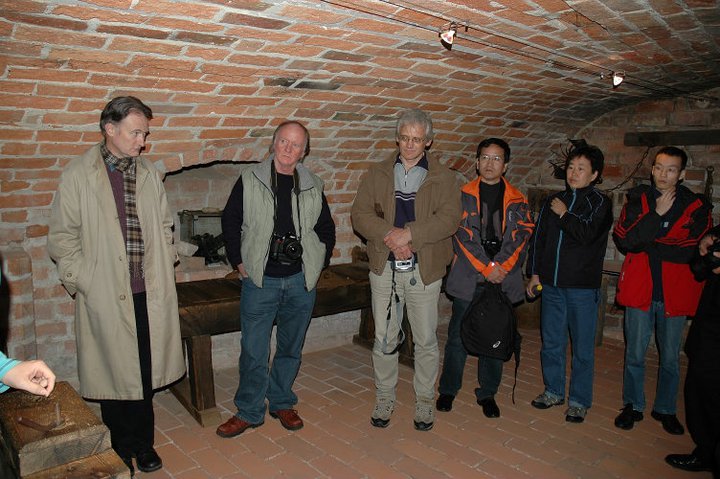===== ASTRONAUTICAL EVOLUTION =====
Issue 64, 1 December 2010 – 41st Apollo Anniversary Year
- Towards the Sociology of the Universe?
- Neubrandenburg notes
All content is by Stephen Ashworth, Oxford, UK,
unless attributed to a different signed author.
=============== AE ===============
(1) Towards the Sociology of the Universe?
On 8 September 2010 the British Interplanetary Society hosted an evening lecture, mischievously entitled “How should we humanise outer space?”, arguing that human civilisation in anything like its current form should NOT humanise outer space.
The presenters of that lecture, Peter Dickens and James S. Ormrod, are British lecturers in sociology. Their views on the undesirability of our current expansion into space are expounded in detail in their recent book, Cosmic Society: Towards a Sociology of the Universe. Further discussion is found on their website, The Sociology of the Universe [which has since been taken down, such is the authors’ confidence in their subject].
Having read their book, I am able to report that it constitutes a malicious, nonsensical and ideologically motivated attack on the pro-space movement.
It offers a diet of Far-Left Marxist-Leninist jargon only half-disguised as academic discourse. While pouring criticism on current, past and future space programmes of the developed world and denigrating the motivations of people who wish to fly in space personally, it has nothing better to offer in their place than vague platitudes about improving the lot of the dispossessed – a goal which can be achieved, it implies, through a socialist revolution resulting in a repressive Soviet-style state, complete with psychiatric prisons for dissidents.
The essay is in two parts: the review itself, followed by some observations of my own on society and the universe.
=============== AE ===============
(2) Neubrandenburg notes
Some notes and impressions from the Neubrandenburg space conference (“26. Tage der Raumfahrt”, 5-8 November, organised by the German space magazine Raumfahrt Concret).

I was talking to a recently retired ESA manager, who had been intimately involved in Europe’s contribution to the ISS and had given the conference’s keynote speech on that subject. In an effort to explain why the project had been so troubled, I suggested that the ISS was just too big. He quickly put me straight on that: the ISS astronauts in space are in the ironic condition that they do not have enough space.
What they need are lockers to put things in, so that everything not in use is tidied out of the way and so that the crew knows where everything is kept. Any caravan owner would do the same. But they do not have sufficient lockers, and since the cancellation of the US habitation module they do not even have a demarcation between working space and living space. Thus all the images of the interior of the station show chaotic clutter everywhere. I was told that Thomas Reiter had been tasked with taking an inventory of the items in the Russian segment, which he had found a very frustrating task. One of the last Shuttle missions will take up a Multi-Purpose Logistics Module which will be attached to the station in order to provide more storage space.
The lack of living and working space is clearly down to the high cost of putting modules into orbit. This again leads back to the critical importance of economic access for any space station, and hence the fundamental engineering flaw in the planning of the ISS. First get your transport system sorted – which in the USA of the 1990s would have meant developing a second- or third-generation shuttle – and then build the facility which will be dependent upon it. Or at least, if you’re going to build the facility first, one of its main purposes when built must be to stimulate others to create more efficient ways of reaching it (Donald F. Robertson’s “San Francisco” model) – if this is now beginning to happen, it is more by accident than design.
============
Another conversation with a conference participant. He explained to me that the reason why space agencies have ignored space solar power, or restricted it to the ghetto of advanced concepts (which never get further than paper studies – Freeman Dyson’s “paper NASA”), is that they fear that large-scale space operations in support of mass markets for tourism or energy would cause those agencies to be superseded by the private sector, and thus destroy them.
In other words, if we want to see progress in large-scale passenger spaceflight or space solar power, we must call for space tourism and energy as enablers of agency exploration of the Moon and Mars. The two must always be linked: the agencies cannot do sustainable exploration until they have a growing private sector in low Earth orbit to develop an economic supporting infrastructure; that growing commercial spaceflight industry is the key enabler of meaningful Moon and Mars exploration.
============
A couple of fascinating historical visits. Firstly, to the Peenemünde Museum, the site of the launch of the A-4 rockets which were the first manmade objects to ascend above the atmosphere and into space. And later to the Penzlin Museum of Magic and Witch Persecutions in Mecklenburg, complete with restored dungeons in which the poor victims – some men, mostly women but also many children – were tortured to force them to confess to witchcraft before they were burnt at the stake.


At both sites, but especially Penzlin, the physical remains are a mute reminder that the people who once lived there had a very different worldview to our own. It’s very difficult for a sophisticated moderner to think himself or herself back into those states of mind. At Peenemünde, people’s mental horizons must have been shaped by the all-pervasive atmosphere of militant nationalism, with the First World War and the Weimar inflation in recent memory. While in 17th-century Penzlin, above all there must have been the consciousness of a struggle against evil in the form of the invisible demons who were inflicting the hardships of the Little Ice Age, the fear of being found in league with them and the absolute priority of the salvation of the soul though Christian dogma and practice.
People like to say that an alien civilisation from another star will be utterly incomprehensible to us. But I wonder whether there don’t exist civilisations even more alien to us? – those found in our own history books.
Very many thanks to the organisers of the Neubrandenburg Tage der Raumfahrt, and especially to J.M., for taking the trouble to arrange these fascinating visits.